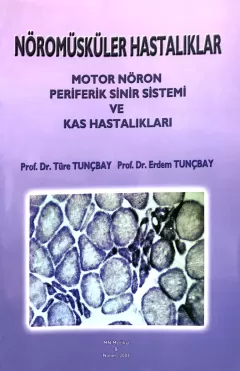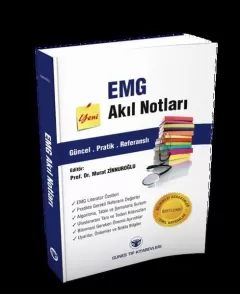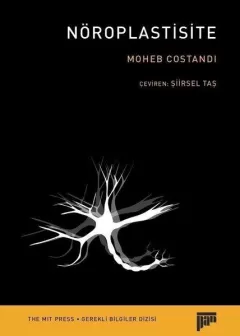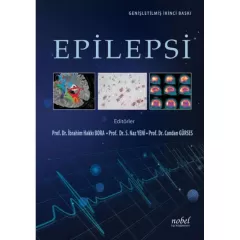
The Neuroscience of Traumatic Brain Injury
[indirim]
-
Basım Yılı: 2023
-
Basım Sayısı: 1
-
İç Sayfa Özellikleri: Renkli,Kuşe Kağıt
-
Sayfa Sayısı: 1168
-
Kitap Dili: İngilizce
-
ISBN Numarası: 9780323991971
Diagnosis and Treatment of Traumatic Brain Injury will improve readers’ understanding of the complexities of diagnosis and management of traumatic brain injuries. Featuring chapters on drug delivery, different treatments, and rehabilitation, this volume discusses in detail the impact early diagnosis and effective management has on the long-term prognosis of these injuries and the lives of those affected. This book will be relevant for neuroscientists, neurologists, clinicians, and anyone working to better understand these injuries. Traumatic brain injury has complex etiology and may arise as a consequence of physical abuse, violence, war, vehicle collisions, working in the construction industry, and sports. Cellular, Molecular, Physiological, and Behavioral Aspects of Traumatic Brain Injury will improve readers’ understanding of the detailed processes arising from traumatic brain injury. Featuring chapters on neuroinflammation, metabolism, and psychology, this volume discusses the impact of these injuries on neurological and body systems to better understand underlying pathways. This book will be relevant for neuroscientists, neurologists, clinicians, and anyone working to better understand traumatic brain injury
- over image
- Title page
- Table of Contents
- Front Matter for Volume 1
- Diagnosis and Treatment of Traumatic Brain Injury
- Copyright for Volume 1
- Dedication for Volume 1
- Contributors for Volume 1
- Preface for Volume 1
- Front Matter for Volume 2
- Cellular, Molecular, Physiological, and Behavioral Aspects of Traumatic Brain Injury
- Copyright for Volume 2
- Dedication for Volume 2
- Contributors for Volume 2
- Preface for Volume 2
- Volume 1: Diagnosis and Treatment of Traumatic Brain Injury
- Section A: Setting the scene and introductory chapters
- Chapter 1: Traumatic brain injury and in-hospital mortality- CT perfusion and beyond
- Abstract
- Introduction
- Neuroimaging for TBI
- Diffusion tensor imaging
- CT perfusion and in-hospital mortality
- Applications to other areas of neuroscience
- Mini-dictionary of terms
- Key facts of TBI
- Summary points
- References
- Chapter 2: Predictors of outcome in moderate and severe traumatic brain injury
- Abstract
- Introduction
- Predictors and outcome measures
- Pediatric TBI
- Prognostic models
- Epidemiological considerations: the importance of outcome prediction considering between-country differences
- Approaches to predictive models in TBI: Discordance between clinical research and clinical management of TBI
- Recommendation for developing a predictive model in TBI
- Applications to other areas of neuroscience
- Mini-dictionary of terms
- Key facts of potential strategies in TBI outcome research
- Summary points
- References
- Chapter 3: Thirty years post-injury: Impact of traumatic brain injury on later Alzheimer’s disease
- Abstract
- Acknowledgments
- Introduction
- Understanding traumatic brain injury as a risk factor for Alzheimer’s disease
- Similarities in the long-term prognosis of mild repetitive and severe isolated traumatic brain injury
- Post-traumatic brain injury Alzheimer’s disease
- Amyloid-β pathology in traumatic brain injury
- Tubulin-associated unit pathology in traumatic brain injury
- Applications to other areas of neuroscience
- Mini-dictionary of terms
- Key facts of post-traumatic brain injury delayed-onset cognitive and psychiatric disorders
- Summary points
- References
- Chapter 4: Drug interventions and stem cells in traumatic brain injury: Translation from experimental model to bedside
- Abstract
- Introduction
- The pathophysiology of TBI
- Possible treatments for TBI: Drug interventions
- Introduction to stem cells and their therapeutic potential
- Pre-clinical studies utilizing stem cells for the treatment of TBI
- Clinical studies utilizing stem cells
- Limitations of stem cells use
- Application to other fields of neuroscience
- Mini-dictionary of terms
- Key facts of stem cells
- Summary points
- References
- Chapter 5: Management of traumatic brain injury from the aspect of emergency department and case studies
- Abstract
- Introduction
- Emergency department considerations
- Management of mild brain injury (GCS score 13–15)
- Management of moderate TBI
- Management of sTBI
- Airway
- Rapid sequence intubation
- Breathing
- Circulation
- Disability
- Medical treatment of brain injury
- Intravenous fluids
- Correction of anticoagulation
- Tranexamic acid
- Transfusion in TBI
- Management of elevated ICP
- Body positioning
- Hyperosmolar agents
- Hyperventilation
- Temperature management
- Sedation and analgesia
- Seizure management
- Corticosteroids
- Calcium channel blockers
- Conclusions and future directions
- Case 1
- Case 2
- Applications to other areas of neuroscience
- Mini-dictionary of terms
- Key facts of advanced trauma life support
- Summary points
- References
- Chapter 6: Neuropsychiatric disorders after severe traumatic brain injury: An overview
- Abstract
- Introduction
- Methodological issues related to the neuropsychiatric assessment
- Classification of the main neuropsychiatric disorders
- A brief consideration of possible interventions
- Conclusion
- Applications to other areas of neuroscience
- Mini-dictionary of terms
- Key facts of neuropsychiatric disorders after severe traumatic brain injury: An overview
- Summary points
- References
- Section B: Clinical features of traumatic brain injury
- Chapter 7: Cerebral hemorrhages in traumatic brain injury
- Abstract
- Acknowledgments
- Introduction
- The BBB and NVC after TBI
- NVC, TBI, and aging
- Vascular pathophysiology after TBI
- TBI hemorrhage identification and localization
- Differential etiology of TBI-related hemorrhages
- (Epi)genetic risk for hemorrhage after experimental TBI
- Novel approaches for TBI CMB neuroimaging CMBs
- TBI hemorrhages and AD
- Applications to other areas of neuroscience
- Mini-dictionary of terms
- Key facts of cerebral hemorrhages after traumatic brain injury
- Summary points
- References
- Chapter 8: Linking fibrinogen, coagulopathy prophylaxis, and traumatic brain injury
- Abstract
- Introduction
- Fibrinogen
- TBI-induced coagulation/fibrinolysis cascade
- Time course of fibrinogen concentration in the acute phase of TBI
- Fibrinogen concentration and outcome in TBI
- Therapeutic target level of fibrinogen
- Measurements of fibrinogen
- Correlation between fibrinogen and fibrinolytic parameters
- Treatment by replenishment of fibrinogen
- Applications to other areas of neuroscience
- Mini-dictionary of terms
- Key facts about fibrinogen
- Summary points
- References
- Chapter 9: Linking traumatic brain injury and nosocomial infections
- Abstract
- Introduction
-
2023
-
1
-
Renkli,Kuşe Kağıt
-
1168
-
İngilizce
-
9780323991971
[Yalnızca kayıtlı kullanıcılar değerlendirme yazabilir.]
-
[Yararlı] () [Yararlı Değil] ()











